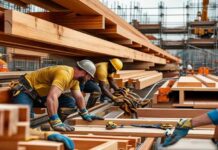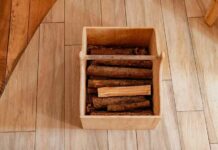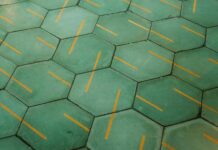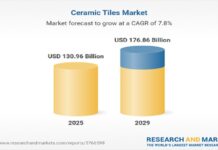Which bricks should you use for your house? You may have heard architecture experts recommending certain bricks for specific projects. Does that mean some bricks are better than others? Read on to discover how different bricks are manufactured and how the manufacturing processes influence their uses.
Brick-Making Techniques: How Bricks Are Manufactured
Bricks are made using various manufacturing techniques, ensuring a rich variety of masonry customised for diverse uses. For example, Ibstock bricks come in wirecut, waterstruck, frogged, and handmade varieties, among many others. And so for every major masonry brand. Let’s discuss the predominant brick-making methods and the type of bricks they yield.
Wirecut
To make wirecut bricks, manufacturers push a block of clay through a die, where the machine cuts it into individual blocks. This technique yields uniform shape and size and sharp, well-defined edges. Manufacturers use various cutting benches and nozzles to vary brick sizes and shapes.
Die machines often make perforations through the wirecut brick to help make the drying and firing processes more effective. These perforations also make the brick lighter and easier to work with. Solid wirecut bricks can be identified by their uniform and precise edges.
Sometimes manufacturers use the rumbling process to soften the sharp edges of wirecut bricks and lend them a rugged, weathered look. Rumbling does not interfere with the masonry’s structural strength, meaning a standard wirecut brick and a rumbled wirecut brick have the same durability and strength.
Manufacturers may also use rollers and other machines to alter the texture of the brick surface. Typical textures you can find in these wirecut products are:
- Creased
- Sanded
- Rolled
- Rustication
- Dragwire textures
The wirecut method is fast since it yields high quantities of masonry at a time. Wirecut brick is appropriate for any construction project but is particularly suitable for projects requiring strength and durability. It’s also aesthetically pleasing and makes eye-catching facades.
Waterstruck
In the waterstruck method, manufacturers add water to the mould to keep the brick from sticking. They then pour water on the brick to release it from the mould. The water leaves a distinct texture on the brick surface and gives the edges a slightly rough appearance.
Waterstruck bricks are almost always solid, although they sometimes have a frog body. Different firing strategies alter the colour of the bricks. They have the same mechanical properties as standard facing bricks, so use them in any project that requires facing bricks.
Handcrafted Bricks
Every brand has a different process for customising their handmade bricks. Generally, though, refined clay is thrown into sanded moulds by hand. They are not shaped, cut or trimmed using machines. Before firing the masonry, manufacturers may add sand in various quantities to create custom brick sizes and textures.
Handmade bricks are as strong and durable as machine-made bricks. Their structural performance is similar, and you can use handmade bricks the same way you would use machine-produced ones. Throwing each block of clay into the mould produces a unique pattern on the brick’s surface, giving handmade bricks their distinct, non-smooth texture.
Some manufacturers use modern kilns to achieve a level of consistency in their handmade brick repertoire. Opt for these if you’re not looking to create a highly bespoke look.
Another benefit of handcrafted bricks is that they can be made in any size and are a good choice for special projects that require non-standard masonry.
Long Format
Long-format bricks, also called linear or Roman bricks, are longer and more slender than standard bricks, some as long as 500 mm or more. They are perfect for emphasising unusual design dimensions and highlighting a building’s linear details.
Long-format bricks come in different colours. They can be wirecut or solid and have various textures.
Stock Bricks
Stock bricks have a frogged body. Moulds with stock boards are used to make stock bricks. The stock (or stock board) is a block of wood that sits on the moulder’s bench. A kicker is usually placed on top of the stock so that when you add the clay to the mould, the kicker creates a depression in the bottom face of the brick.
Brick manufacturers use diverse methods to make bricks. These techniques produce bricks of different sizes, shapes, colours and textures, making it easy for builders to customise their buildings using standard and non-standard bricks.
FAQs
- Are handmade bricks as good as machine-made ones?
Handcrafted bricks match the quality standards of machine-made bricks, except that you add them to the mould using your hands. No machines are used to shape the brick, while different equipment is used to compress and cut machine-made bricks.
- Are frogged bricks durable?
Frogged bricks are as durable as solid bricks—only their shape differs. British Standard regulations recommend laying masonry with the frog up so the builder can fill them with mortar. This transmits the loading force equally across the brickwork and maximises strength and stability.
If you are interested in bricks and other building materials, you can buy them from Building Materials Wholesale.




























